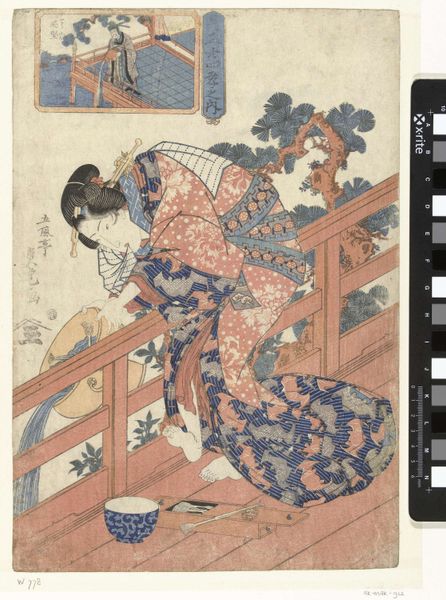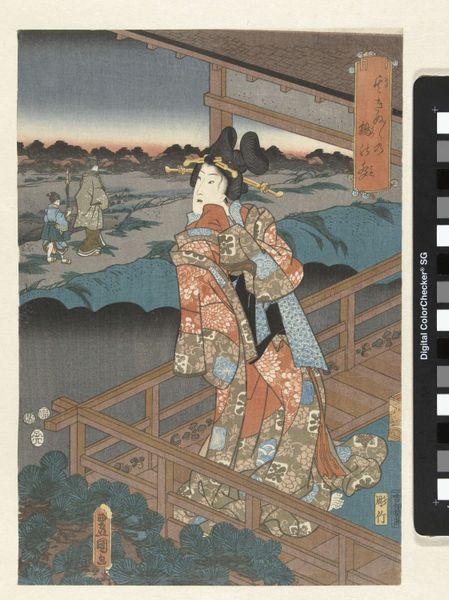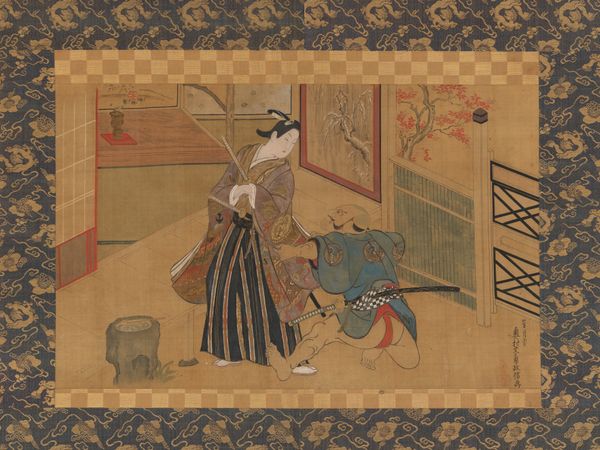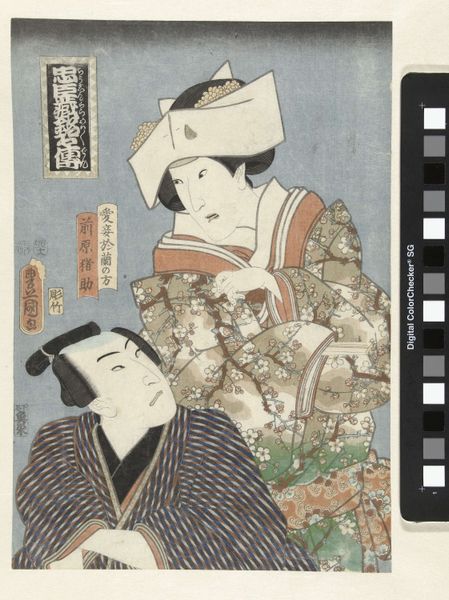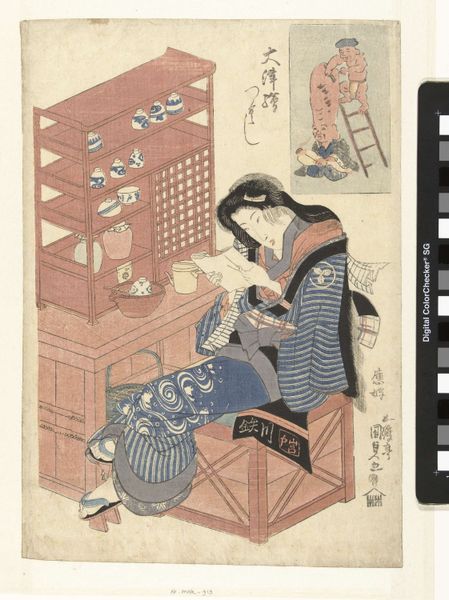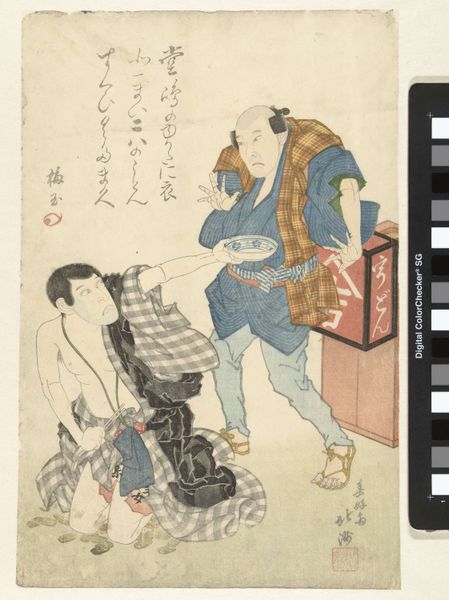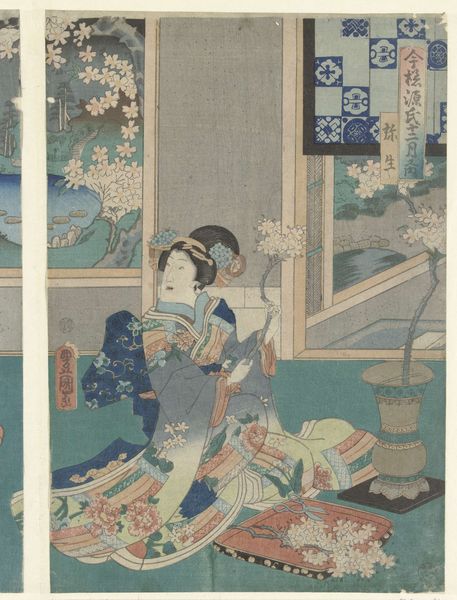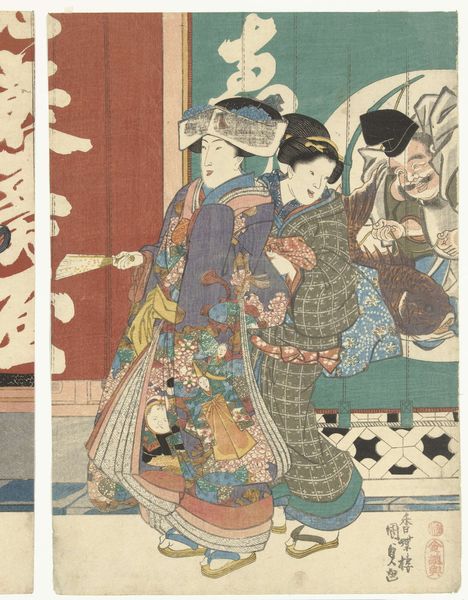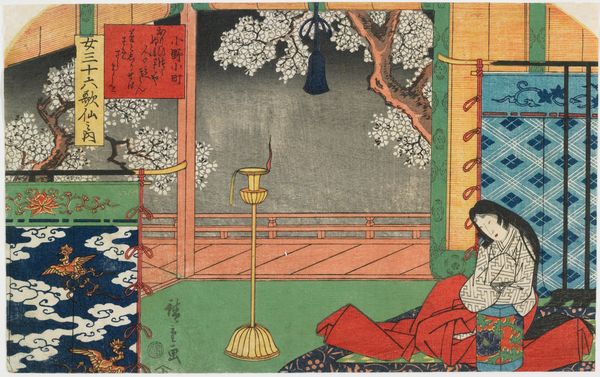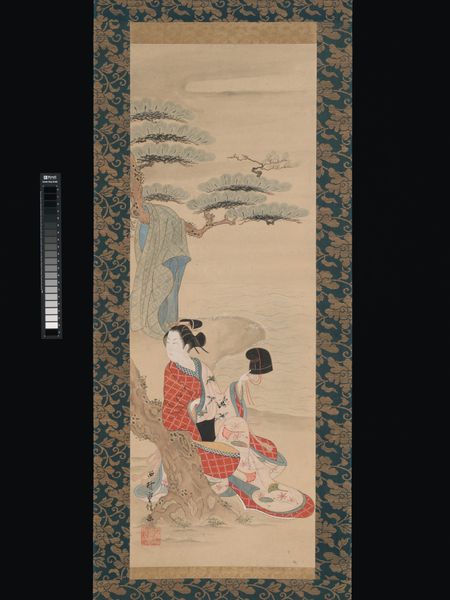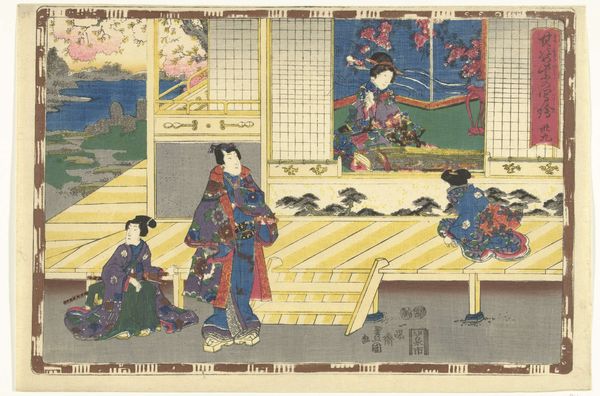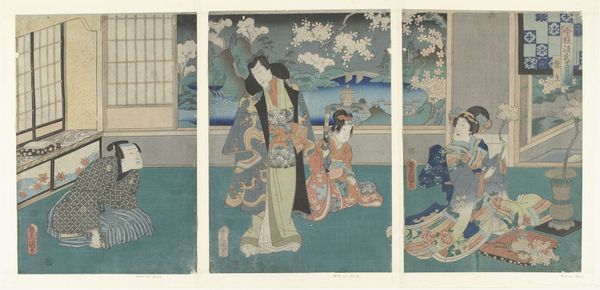
print, woodblock-print
#
portrait
# print
#
ukiyo-e
#
figuration
#
woodblock-print
#
line
#
genre-painting
Dimensions: height 357 mm, width 246 mm
Copyright: Rijks Museum: Open Domain
Utagawa Kunisada created this woodblock print, titled "Prins Genji en knielende vrouw," sometime before his death in 1865. It depicts a scene of submission, laden with social implications. Kunisada worked in Japan, during the Edo period, a time marked by strict social hierarchy and the rule of the Shogunate. The print’s composition speaks volumes about power dynamics. We see a woman kneeling, her head bowed before a man, presumably Prince Genji. Her sword lies before her, a symbol of lost agency. The image is rich with visual codes, with textiles acting as indicators of status and wealth. What does this tableau suggest about the structure of Japanese society at the time? Is it a commentary on the expected roles of men and women? Or a romanticization of those roles? As historians, we look to literature, social records, and other cultural artifacts to understand this artwork better. We can analyze the ways in which artistic traditions are used to maintain or challenge the status quo. The true meaning of art is always tied to its social and institutional context.
Comments
No comments
Be the first to comment and join the conversation on the ultimate creative platform.


